Bionic limbs, once the stuff of science fiction, have become a remarkable reality in modern medicine. These advanced prosthetics have transformed the lives of amputees, offering unprecedented levels of functionality and control. But as technology continues to evolve, the question arises: what’s next for bionic limbs? In this article, we’ll explore the future of bionic limbs, looking at the latest advancements and what they might mean for the future of prosthetics.
1. Integration of Neural Interfaces
One of the most exciting areas of development in bionic limbs is the integration of neural interfaces. Traditional prosthetics are controlled by mechanical or electrical signals, but neural interfaces aim to connect directly to the user’s nervous system. This connection allows for more natural and intuitive control of the prosthetic, as well as the possibility of sensory feedback.
Recent advancements have seen the development of electrodes that can be implanted into the nerves, muscles, or even the brain itself. These electrodes can pick up signals from the nervous system and translate them into movements in the prosthetic limb. In return, they can also send signals back to the brain, allowing the user to “feel” through their prosthetic limb.
The implications of this technology are profound. For example, a user could control a bionic hand with the same thought processes used to control a natural hand, leading to smoother, more precise movements. Moreover, the ability to feel temperature, pressure, or texture could greatly enhance the user’s experience, making the prosthetic feel more like a part of their body rather than an external tool.
2. Advancements in Sensory Feedback
While sensory feedback is still in its early stages, it holds immense potential for the future of bionic limbs. Current prosthetics lack the ability to provide sensory feedback, which can make tasks like grasping delicate objects or walking on uneven terrain more challenging. However, researchers are working on ways to mimic the sensory capabilities of natural limbs.
One approach is through haptic technology, which can simulate the sense of touch by applying vibrations or pressure to the skin. This technology could be integrated into bionic limbs to provide real-time feedback to the user. For example, when picking up an object, the user could feel how hard they are gripping it, preventing them from accidentally crushing or dropping it.
Another approach involves the use of bioengineered tissues or synthetic materials that can replicate the sensory properties of skin. These materials could be layered over the prosthetic limb, providing a more realistic and responsive sensory experience. The combination of these technologies could bring bionic limbs closer to the functionality of natural limbs, enhancing the quality of life for users.
3. Personalization Through 3D Printing
3D printing has already made significant contributions to the field of prosthetics, and its role is expected to grow in the future. One of the key advantages of 3D printing is the ability to create highly personalized prosthetics that are tailored to the individual’s anatomy. This personalization can result in better comfort, fit, and functionality.
As 3D printing technology continues to advance, we can expect to see even more sophisticated prosthetics being developed. For instance, 3D printing could be used to create prosthetics with complex internal structures, such as those found in natural bones and tissues. This could lead to lighter, stronger, and more durable prosthetics that better mimic the properties of natural limbs.
Moreover, 3D printing could enable rapid prototyping and customization, allowing users to try out different designs and features before settling on the perfect prosthetic. This could significantly reduce the time and cost associated with developing custom prosthetics, making them more accessible to a wider range of people.
4. The Role of Artificial Intelligence
Artificial intelligence (AI) is set to play a major role in the future of bionic limbs. AI can be used to analyze and interpret the signals from the nervous system, allowing for more precise and responsive control of the prosthetic limb. It can also be used to learn from the user’s movements and behaviors, adapting the prosthetic’s functionality to better suit their needs.
For example, AI algorithms could be used to predict the user’s intended movements based on past actions, making the prosthetic more intuitive to use. Over time, the prosthetic could “learn” the user’s preferences and adjust its settings accordingly, providing a more personalized experience.
AI could also be used to improve the efficiency and accuracy of neural interfaces. By analyzing the complex patterns of neural activity, AI could help to filter out noise and enhance the signals that are most relevant to controlling the prosthetic. This could result in smoother, more natural movements and a better overall user experience.
5. Wearable Sensors and Data Analytics
The future of bionic limbs is also likely to be shaped by the integration of wearable sensors and data analytics. Wearable sensors can be embedded into the prosthetic or worn on the body to monitor various physiological parameters, such as muscle activity, joint angles, and gait patterns. This data can then be analyzed to optimize the performance of the prosthetic and provide real-time feedback to the user.
For example, if a sensor detects that the user is walking with an uneven gait, the prosthetic could automatically adjust its settings to provide better support and balance. Similarly, sensors could monitor the user’s muscle activity and adjust the prosthetic’s movements to match their intentions more closely.
In addition to improving the functionality of bionic limbs, wearable sensors and data analytics could also play a role in preventive care. By continuously monitoring the user’s movements and physiological data, potential issues such as overuse injuries or socket discomfort could be identified and addressed before they become serious problems.
6. Ethical Considerations and Accessibility
As bionic limbs become more advanced, ethical considerations and accessibility will be increasingly important. The development of highly sophisticated prosthetics raises questions about who will have access to these technologies and how they will be distributed. There is a risk that advanced bionic limbs could become a luxury item, available only to those who can afford them.
To address this issue, efforts must be made to ensure that bionic limbs are accessible to a wide range of people, regardless of their financial situation. This could involve reducing the cost of production, increasing funding for prosthetic programs, or implementing policies that provide greater support for amputees.
Moreover, as bionic limbs become more integrated with the body and the nervous system, ethical questions about identity, autonomy, and human enhancement will need to be carefully considered. The line between medical necessity and enhancement could become blurred, leading to debates about the appropriate use of these technologies.
Conclusion
The future of bionic limbs is incredibly promising, with advancements in neural interfaces, sensory feedback, AI, and 3D printing set to revolutionize the field. As these technologies continue to evolve, bionic limbs will become more functional, intuitive, and personalized, offering amputees a level of control and experience that was once unimaginable.
However, as we move forward, it will be crucial to address the ethical and accessibility challenges that arise, ensuring that these life-changing technologies are available to all who need them. The next decade will likely bring significant changes to the landscape of prosthetics, and the possibilities are as exciting as they are boundless. The future of bionic limbs is not just about restoring lost function; it’s about enhancing human potential and redefining what it means to be whole.



